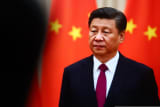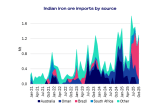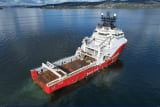
The latest tit-for-tat move in the China-US trade war is the planned implementation of a Chinese version of the US-imposed financial penalties on Chinese-affiliated tonnage, both due to start October 14.
Indeed, the two schemes are largely identical with regards to the timing of the implementation and ratcheting up of the “special port fees”, as well as stated level of the fees (starting at $55-56/NRT from 14 October).
However, while the US version has been heavily watered down and was announced several months in advance, the Chinese equivalent was dropped on the market on a quiet Friday, a mere four days ahead of its supposed implementation. In addition to US-flagged and-built vessels, which can be safely ignored as there are effectively none in international non-government deep-sea trade, China’s levies will apply to any vessel owned or operated by any US legal “persons” (i.e. corporations, organizations or individuals) or where such persons directly or indirectly own or represent 25% or more of the company’s equity, voting rights or board seats.
It is this latter stipulation that is the real kicker. The extension to financial ownership and board seats will possibly catch many listed companies given the likelihood that a large chunk of shares will be in nominee accounts with the large US investment banks and mutual funds etc. Add in any company partly financed by US private equity, leasing companies, or even private companies where the principals have e.g. a secondary US citizenship and it is clear that the share of the world fleet potentially ensnared by these “special fees” is substantial. Unfortunately, standard fleet data will not be able to capture the complexities introduced by the “part financial ownership” clause and so looking at US operated and owned fleets in this context will just give numbers that represent the top of the iceberg.
The knee-jerk reaction of the spot and forward freight markets today (10 Oct) was to rally, and in the very short-term that is probably fair. If the Chinese measures are implemented and remain in place – i.e. they are not merely a negotiating tactic to force the US Administration to change tack before Oct 14 – then the ensuing market chaos and dislocation of tonnage is supportive of rates.
What are some of the possible short-term effects?
- Affected charterers/operators will fix replacement vessels in the open market to take care of any existing Chinese business but will also re-let affected tonnage so this does not affect the market balance beyond some initial inefficiencies and additional fixing volumes.
- Affected charterers will move to voyage charter business to avoid becoming the operator and trigger the fees.
- Affected tonnage will move to non-Chinese business (India, Asia ex-China, transatlantic and backhaul). The net effect on the market depends on the size of the affected fleet relative to regional demand but my “hot take “ for Capesize as an example would be that this could pressure backhaul and transatlantic rates (the new natural home for US-affiliated tonnage) more than the relative improvement in the fronthaul and transpacific markets due to the relative size of the trades.
In the longer run the question is, as always, whether there is enough non-affected tonnage to cater for the share of global trade affected by the regulations. While in the USTR case this was a pretty resounding “yes”, at least for drybulk, the Chinese version is potentially more severe.
In the short term, it is posible that some vessels trading into China will have to pay the planned fees (never mind the lawyer fodder for inbound business already fixed – who is to pay for something that was not even on the horizon a few days ago?). Even if the restructuring of companies and contracts, and the geographical swapping of tonnage, would eventually solve the issue, this takes months and is costly. This, of course, is the intention in a tit-for-tat geopolitical game.
What happens in case Chinese trade cannot be fully catered for by the non-US-affiliated fleet? From an economic perspective, these “special fees” are, of course, nothing but an additional voyage cost and so will be passed on to charterers (and eventually receivers) through higher freight rates on a voyage basis. The marginal cost for US-affiliated vessels will, thus, increase if trading into China while other vessels could enjoy higher earnings on a TCE basis on the same route. While that may sound good for some, it also means higher CFR commodity prices for seaborne imports and margin compression in China, making certain arbitrage trades unprofitable.
The Chinese authorities are not known for making hasty policies on the back of ChatGPT so in all likelihood these calculations of negative secondary effects (primarily higher costs of imports) have been made and the conclusion was that the additional political pressure and domestic popularity was worth it.
Finally, if such “special port fees” become a permanent feature of global trade then a wild card for freight traders is the Baltic Exchange’s position on whether to include these as port fees in index calculations (ref. scrubber vs. non-scrubber discussion). That will mean a massive win or loss for half of the FFA market.
Will all of this survive beyond Tuesday? We do not know, but our overall position is that we will see more of this bifurcation of global trade and, with it, the shipping industry.
By Dr Roar Adland, Global Head of Research, SSY.
Articles
You may also be
interested in
View allGet in touch
Contact us today to find out how our expert team can support your business














